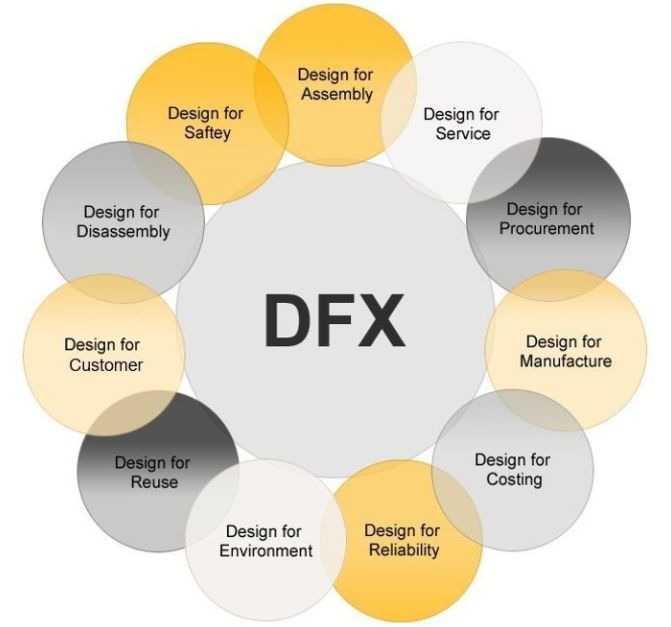Design for X (DFX): A Holistic Approach to Smarter Product Development 💡
DFX, or Design for X, is a methodology that encompasses multiple dimensions of design optimization, aiming to enhance product performance, cost-efficiency, safety, sustainability, and more. It ensures that products meet diverse requirements across their lifecycle, from concept to end-of-life.
Albert Einstein once said, “The best design is the simplest one that works.” However, a simple design can be difficult and time-consuming to create.
However, putting too little work into engineering a new product can easily backfire in the latter stages of a project. It is more efficient in terms of overall time and money spent to take the time to consider the different aspects of a project before it leaves the drawing room.
This is where design for excellence (aka design for X and DFX) comes in.
Key DFX Dimensions
1. Design for Assembly (DFA):
Simplifies product assembly by minimizing the number of components and optimizing their arrangement.
2. Design for Service:
Ensures ease of maintenance, repairs, and upgrades, reducing downtime and extending product lifespan.
3. Design for Procurement:
Focuses on using readily available and cost-effective materials to streamline the supply chain.
4. Design for Manufacture (DFM):
Enhances manufacturability by optimizing designs for efficient production processes.
5. Design for Costing:
Aims to reduce production and operational costs while maintaining quality and functionality.
6. Design for Reliability:
Prioritizes product durability and consistent performance under various conditions.
7. Design for Environment:
Promotes eco-friendly practices, such as using sustainable materials and reducing environmental impact.
8. Design for Reuse:
Encourages modularity and design choices that enable components or products to be reused.
9. Design for Customer:
Focuses on user-centric design to meet customer expectations and enhance satisfaction.
10. Design for Disassembly:
Simplifies product disassembly to facilitate recycling and disposal at the end of the product's life.
11. Design for Safety:
Ensures that products adhere to safety standards and minimize risks during use, maintenance, and disposal.
Why DFX Matters
By adopting a DFX approach, organizations can:
Streamline production processes and reduce costs.
Improve product quality and reliability.
Enhance sustainability and reduce environmental impact.
Achieve faster time-to-market and greater customer satisfaction.
At IDofThings, we leverage DFX principles to craft innovative, efficient, and sustainable products that cater to the diverse needs of clients and end-users.
Want to explore how DFX can transform your next product? Let's collaborate and create exceptional solutions!
hashtagindustrialdesign hashtagdesignforx hashtagDFX hashtagDesignformanufacturing hashtagDesignforassembly






